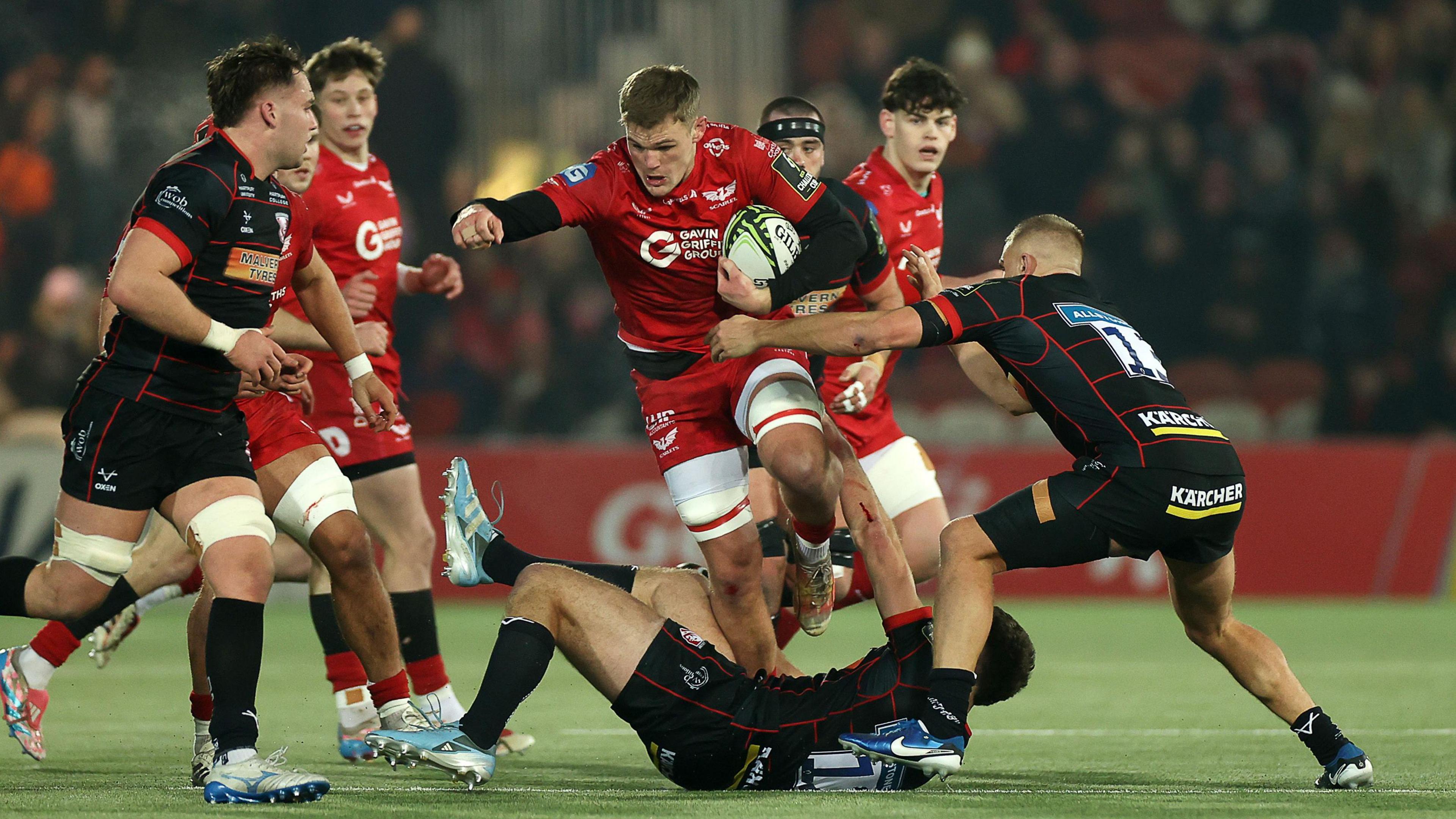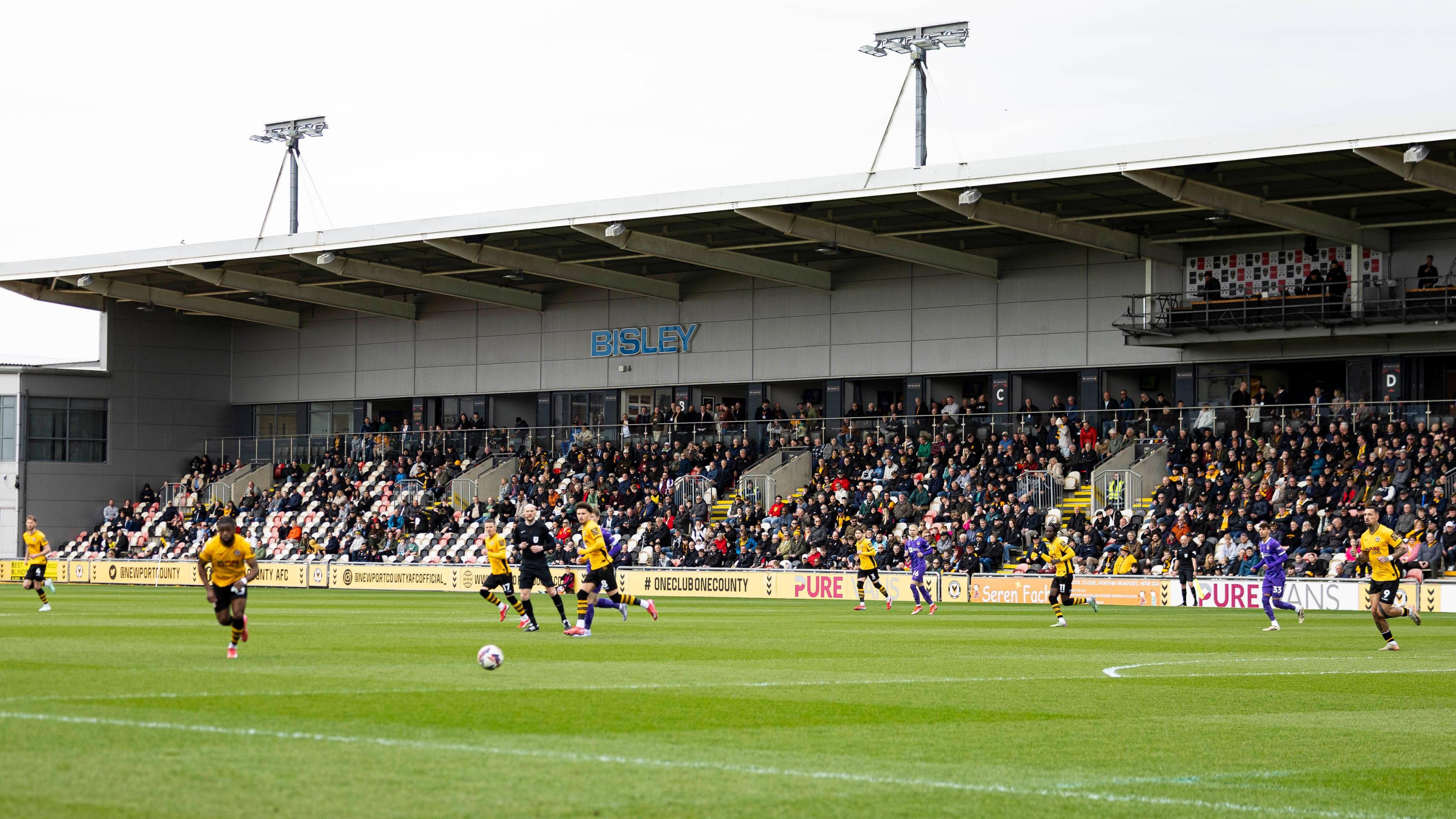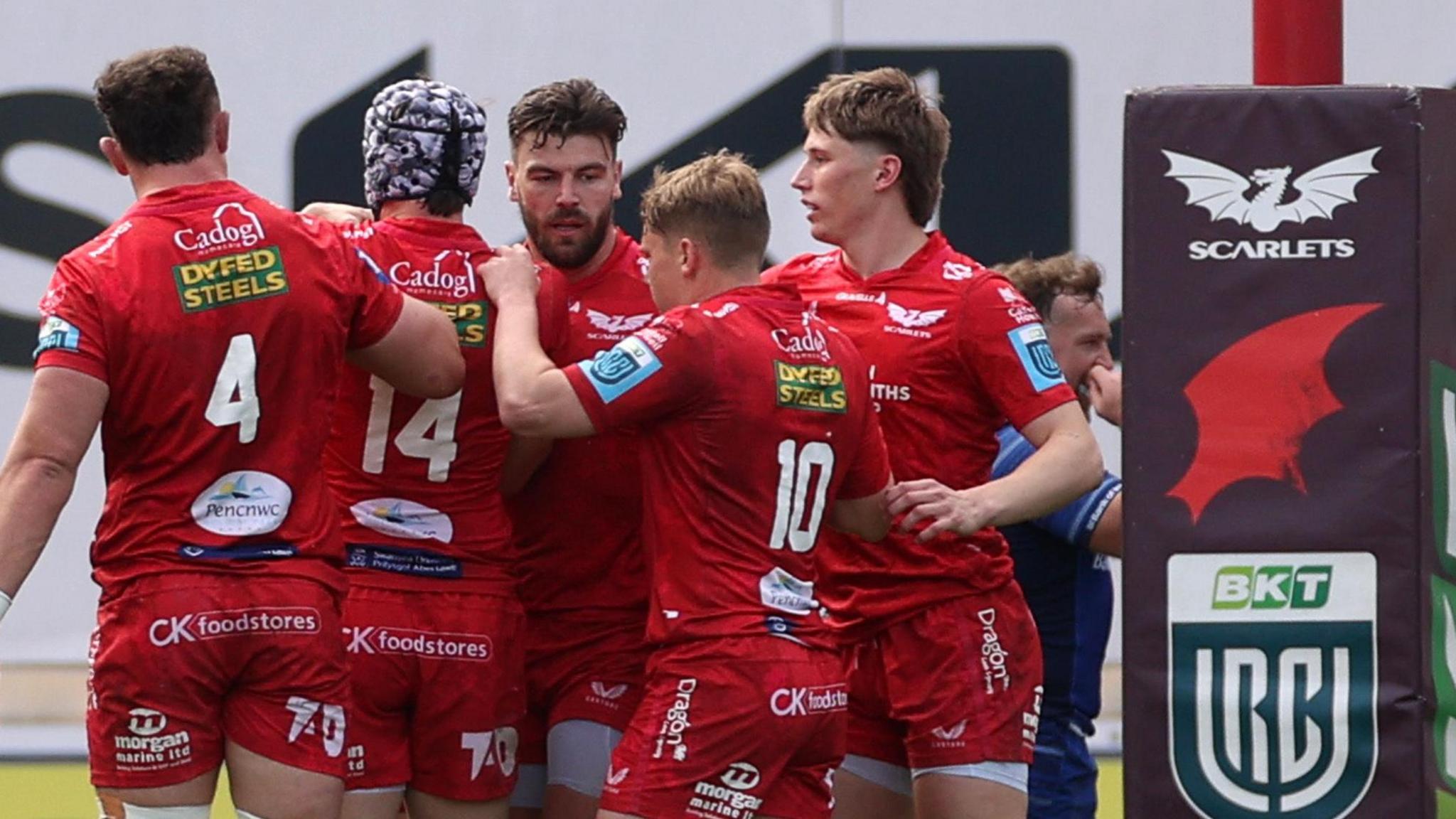The questions to be answered in Welsh rugby shake-up

Ospreys, Scarlets, Dragons and Cardiff compete in the United Rugby Championship
- Published
The one certainty from the Welsh Rugby Union's "radical" plans for the professional game in Wales is little will remain the same.
The governing body presented a 90-page document on Wednesday that will shake up everything - academies, the women's game and, of course, the regions.
The WRU published four potential models and said keeping the current structure - as many agree - is no longer an option given the slump in Welsh rugby fortunes.
As the Union bosses pressed their case for change at the Principality Stadium, the pitch was being resurfaced before the autumn internationals, by which time a final decision is due.
So what remains unanswered as another seismic day looms?
Who survives?
This is the key question at the forefront of every fans' thoughts and chief executive Abi Tierney admitted the process will hurt and "not everyone will be happy".
The first decision is whether to have four, three or two professional clubs and should they be equally funded.
The WRU insists a final decision has not been made and will listen to views in the consultation period starting 1 September.
Ideally, the Union wants regions to come to an agreement via mergers but that looks unlikely.
In the west, Ospreys are pressing on with plans to redevelop St Helen's in Swansea and Scarlets have announced new investors.
In the east, Cardiff are already owned by the union while Dragons owners insists elite rugby "must remain in Gwent".
Tierney suggested a tender process was possible if cutting to two was the final choice - as the executive board has recommended.
"Designing a system by consensus is not a good way to end up with an optimum solution," WRU director of rugby Dave Reddin told the Scrum V podcast.
When will changes happen?
'This is about taking Wales back to the top' - Reddin
A decision is due in late October but the timescale to implement any change is another unknown because of the various options.
Creating two new entities, for example, would take far longer than simply tinkering with the funding for the current four.
"If the WRU board propose a two plus two model and there's no change to SRC (Super Rygbi Cymru) and very limited build-out of the infrastructure to support performance in Wales, that's going to be pretty easy to implement," said chairman Richard Collier-Keywood.
"The two [club] model is probably harder to implement."
All options include a commitment to continue funding the four regions under the current participation agreement to 2027.
But if two teams are told in October that they have no future beyond 2027, would they bother to continue for another two seasons?
The aim for a national campus, meanwhile, is a long-term one given that there is currently no location, plans or indication of how it would be financed.
Could Welsh teams play in England?

Scarlets will compete in the Champions Cup this coming season
The WRU is committed to the United Rugby Championship for at least two more seasons and league bosses are part of the consultation process.
Both the league and European competitions would be impacted by changes in Wales and strongly prefer an even number of Welsh sides, whether four or two.
Some fans have mooted the possibility of resurrecting the infamous rebel season of 1998-99 when Swansea and Cardiff defied the WRU and played clubs in England.
But without the governing body's funding, the chances of any region being allowed into, for example, Prem Rugby in England are slim - and that is if English clubs wanted it.
WRU chief executive Tierney said: "The idea that two clubs that were no longer supported by the WRU could play in the English Premiership franchise, understanding what the minimum standards that are required [in that league], it would be very, very difficult. It's a bit of a red herring to suggest that."
How much money will two teams get?
Even the WRU's radical changes would given two teams far greater spending power than regions have now, they would not have dramatic spending power.
The document estimates a squad budget of £7.8m would be "competitive to PRL and Top 14" rivals.
English clubs currently have a salary cap of £7.8m plus one marquee player while the French sides operate with £9.2m, but with various exemptions and credits.
However, two Welsh clubs would still be operating on less than Irish and Scottish rivals.
The WRU would hope that other gains - shared training environments, support staff, academy set-ups - can help close the gap.
WRU cut plans affecting investment - Ospreys chief
- Published21 August
Cutting rugby region 'like losing a best friend'
- Attribution
- Published21 August
Jobs on the line
Wales players threatened to strike during the 2023 Six Nations and the WRU is eager to avoid any similar threat.
But all players in Wales will kick off the new season in September unsure of their long-term future.
The governing body has vowed to honour all contracts signed before May but a reduction to two teams would reduce the playing opportunities to 50 players each.
Coaches, backroom team, operations and administration staff are also all coping with uncertainty.
Cardiff listed 247 employees in their most recent accounts, Scarlets 164, Ospreys 119 and Dragons 106.
"Being able to do it in a transitioned and a managed way rather than an overnight way, we can look at how we can bring roles together and we can redeploy roles," said Tierney.
"A lot of those teams are already to the bone, you know, so there's opportunities for us to strengthen those teams in this new model.
"But we can do it in a transitioned way, in a managed way. Nobody wants to see that number of people lose their jobs overnight and have that level of uncertainty."
What about the current grounds?

Rodney Parade is owned by the Dragons but is also home to Newport County
Ospreys are embarking on a £5m revamp of St Helen's in time for the 2026-27 season alongside Swansea Council.
But the future of rugby in the west must be sorted before the pace of work can step up and Swansea council's public funding is conditional.
Given Carmarthenshire council owns Parc y Scarlets and Cardiff Athletic Club are landlords of the Arms Park, Dragons are the only one of the four current regions to own their own ground.
Any changes could have a knock-on effect for Newport County, given the League Two football club have a 10-year rolling lease for Rodney Parade, a requirement of the English Football League.
Their £500,000-a-year rent as well as other sporting fixtures means Rodney Parade would remain a viable stadium even without top-flight rugby.
- Published11 August
